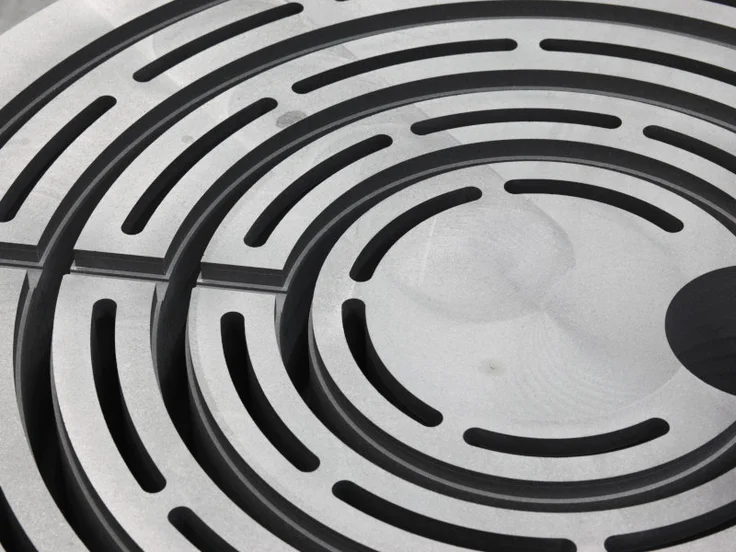Annular groove graphite heat exchangers
Brochures
pdf - 6 MB
-
Annular groove graphite heat exchangers (interchangers) are especially adapted to the heating or cooling of ultra-corrosive liquid chemicals. This specific design allows for heat recovery between two ultra-corrosive fluids.
Conception
Annular grooves are machined into impervious graphite discs to form the process and service channels. Heat is transferred by conduction through the graphite left between the process and the service channels. Annular groove graphite heat exchangers consist of a stack of graphite discs that are fused together.
-
Annular groove graphite heat exchangers' Features
- Heat interchange between two ultra-corrosive media.
- Wavy groove design for enhanced turbulence (optional)
- Carbon fiber reinforcement (optional)
- Heat transfer area up to 55 m²
- Design pressure up to 10 barG on process and service side
- Design temperature up to 200°C
- Vertical or horizontal orientation
-

-
Annular groove graphite heat exchangers: Benefits
- Ultra-efficient heat transfer
- Compactness
- Great operational safety and reliability
- No risk of cross-contamination
-
-
Applications of Annular groove heat exchangers
- Heating, Cooling, Condensation, Evaporation (falling film or forced circulation), Absorption
- Interchanger Primary & secondary condensers, Absorber
- Heat recovery between two corrosive media
- Fine Chemistry, Specialty Chemistry, Pharmacy: Active Pharmaceutical Ingredient, Crop Protection, Fumed Silica, Silicones, Flavors and Fragrances, Vitamins, and many more…
-
Product Literature
Brochures and Flyers
02/03/2025
Heat exchangerspdf - 6 MB




